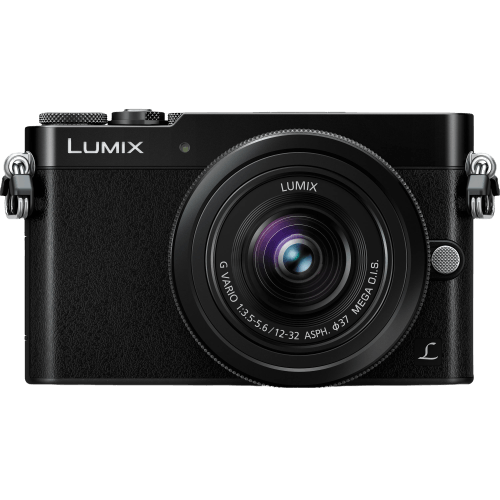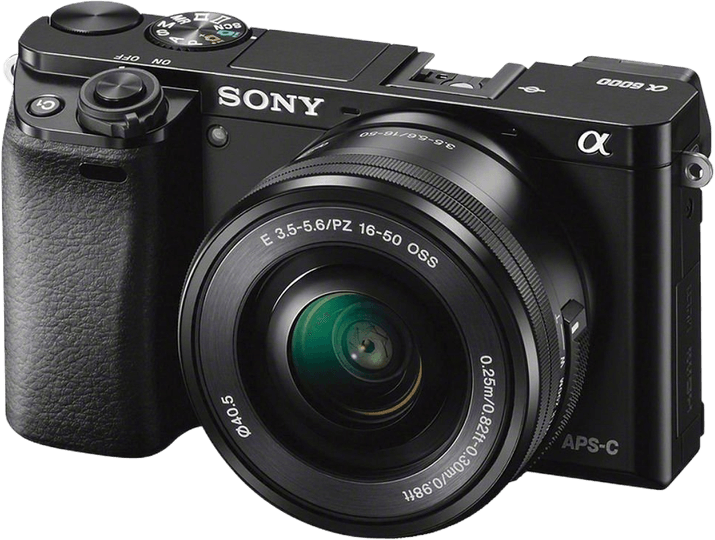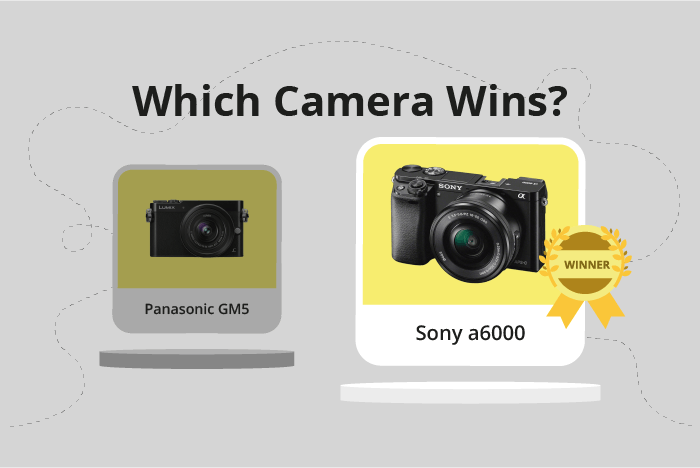Panasonic Lumix DMC-GM5 vs Sony a6000 Comparison
Panasonic Lumix DMC-GM5

Sony a6000

The Sony a6000 takes the lead with a score of 57/100, while the Panasonic Lumix DMC-GM5 follows closely with a score of 48/100. Both cameras are mirrorless and were released in 2014. They share similarities in their announcement dates, with the Sony a6000 announced on February 12th and the Panasonic Lumix DMC-GM5 on September 15th.
The Sony a6000 stands out with a higher launch price of $799 compared to the Panasonic Lumix DMC-GM5’s $650, indicating better features and performance. However, the Panasonic Lumix DMC-GM5 has a smaller size (99 x 60 x 36mm) and lighter weight (211g / 0.47lbs), making it more portable and convenient for travel.
Taking all these factors into account, the Sony a6000 emerges as a superior camera in terms of performance, while the Panasonic Lumix DMC-GM5 offers greater portability and affordability for those seeking a compact travel companion.
Panasonic Lumix DMC-GM5 vs Sony a6000 Overview and Optics
The Sony a6000 triumphs over the Panasonic Lumix DMC-GM5 in optics with a score of 67/100 compared to the GM5’s 49/100. Both cameras share certain specifications, including a CMOS sensor type, the absence of image stabilization, and a similar lens mount system (Micro 4/3 for the GM5 and Sony E for the a6000).
The Sony a6000 outperforms the GM5 in several aspects. It boasts a higher megapixel count at 24.3, allowing for more detailed and larger prints. Furthermore, the a6000 has a faster shooting speed of 11 frames per second (fps), providing an advantage in capturing fast-moving subjects. Its sensor size is larger, utilizing an APS-C sensor compared to the GM5’s Micro Four Thirds sensor. This contributes to better image quality and low-light performance. The a6000 also has a superior DXOMARK sensor score of 82, indicating a higher overall image quality.
On the other hand, the Panasonic Lumix DMC-GM5 has a few advantages over the Sony a6000. It features a Venus Engine processor, which may provide slightly better color reproduction compared to the a6000’s Bionz X processor. Additionally, the GM5 has a 4:3 aspect ratio, which may be preferred by some photographers for specific compositions.
Taking these factors into account, the Sony a6000 proves to be the superior camera in terms of optics, offering better image quality, faster shooting speed, and a larger sensor size. However, the Panasonic Lumix DMC-GM5 may still appeal to photographers who prefer its aspect ratio and color reproduction capabilities.
Panasonic Lumix DMC-GM5 vs Sony a6000 Video Performance
The Panasonic Lumix DMC-GM5 comes out on top in the video department with a score of 70/100, while the Sony a6000 trails behind with a score of 56/100. Both cameras have a maximum video resolution of Full HD and dimensions of 1920 x 1080, making them capable of capturing high-quality footage. Additionally, both cameras offer a maximum video frame rate of 60fps, which allows for smooth motion in videos.
The Panasonic Lumix DMC-GM5 surpasses the Sony a6000 in video capabilities mainly due to its built-in time-lapse functionality. This feature allows users to create captivating time-lapse videos without the need for additional equipment or software. This advantage makes the DMC-GM5 a more versatile and convenient option for videographers looking to experiment with different shooting techniques.
On the other hand, the Sony a6000 does not have any noticeable advantages in its video capabilities compared to the Panasonic Lumix DMC-GM5. Both cameras share the same maximum video resolution, dimensions, and frame rate, making their performance quite similar in this aspect.
Taking into account the video capabilities of both cameras, the Panasonic Lumix DMC-GM5 emerges as the superior choice due to its time-lapse functionality. This feature sets it apart from the Sony a6000 and offers users more creative possibilities for their video projects. While the Sony a6000 provides adequate video performance, it does not offer any unique advantages that make it stand out from the DMC-GM5 in this area.
Panasonic Lumix DMC-GM5 vs Sony a6000 Features and Benefits
The Panasonic Lumix DMC-GM5 emerges as the winner in the features comparison, scoring 54 out of 100, while the Sony a6000 lags behind with a score of 41. Both cameras share several common specifications, such as a 3-inch screen size, no GPS, WIFI connectivity, and no Bluetooth. The screen resolutions are almost identical, with the Panasonic GM5 at 921,000 dots and the Sony a6000 at 921,600 dots.
The Panasonic GM5 takes the lead with its touchscreen feature, making it more user-friendly and easier to navigate through settings and options. This added convenience is a clear advantage over the Sony a6000, which does not have a touchscreen. The GM5’s higher feature score is a result of its better performance in this aspect.
However, the Sony a6000 does have one advantage over the Panasonic GM5: its flip screen. This feature allows for more versatile shooting angles and is particularly useful for capturing photos and videos from challenging perspectives. Despite its lower feature score, the Sony a6000’s flip screen is a valuable asset for certain shooting situations.
Taking into account the individual strengths of each camera, the Panasonic Lumix DMC-GM5 is the better choice for those prioritizing a touchscreen interface and ease of use. On the other hand, the Sony a6000 is more suitable for photographers who value the flexibility offered by a flip screen. Ultimately, the decision between these two cameras will depend on the specific needs and preferences of the user.
Panasonic Lumix DMC-GM5 vs Sony a6000 Storage and Battery
The Sony a6000 triumphs over the Panasonic Lumix DMC-GM5 in the storage and battery category, scoring 21 points compared to the GM5’s 13 points. Both cameras share similarities in this aspect, with each having a single memory card slot and accepting SD, SDHC, and SDXC cards. However, the a6000 also supports Memory Stick Pro Duo and Pro-HG Duo cards, adding versatility to its storage options.
The Sony a6000 outperforms the GM5 in terms of battery life, offering 360 shots per charge compared to the GM5’s 220 shots. Both cameras utilize different battery types, with the a6000 using the NP-FW50 battery and the GM5 using the DMW-BLH7 battery. Neither camera has USB charging capabilities.
Despite its lower score, the Panasonic Lumix DMC-GM5 still offers reliable storage and battery options for photographers. However, the Sony a6000’s additional memory card compatibility and longer battery life make it the superior choice in this category.
Alternatives to the Panasonic Lumix DMC-GM5 and Sony a6000
Are you still undecided about which camera is right for you? Have a look at these popular comparisons that feature the Panasonic Lumix DMC-GM5 or the Sony a6000:

